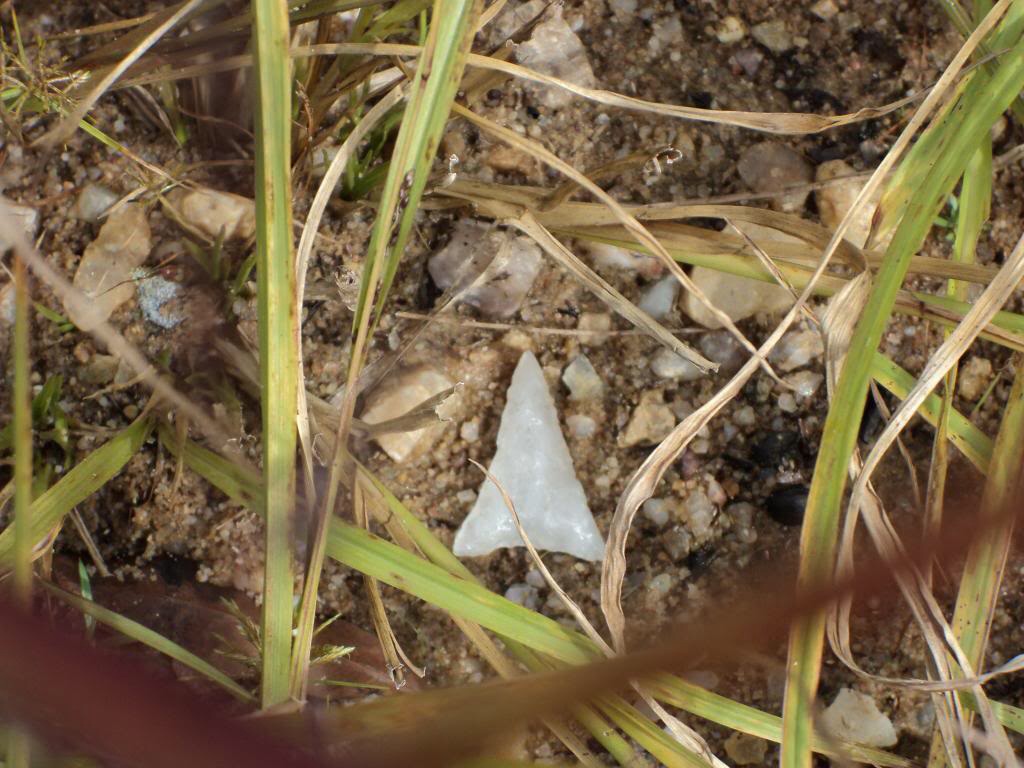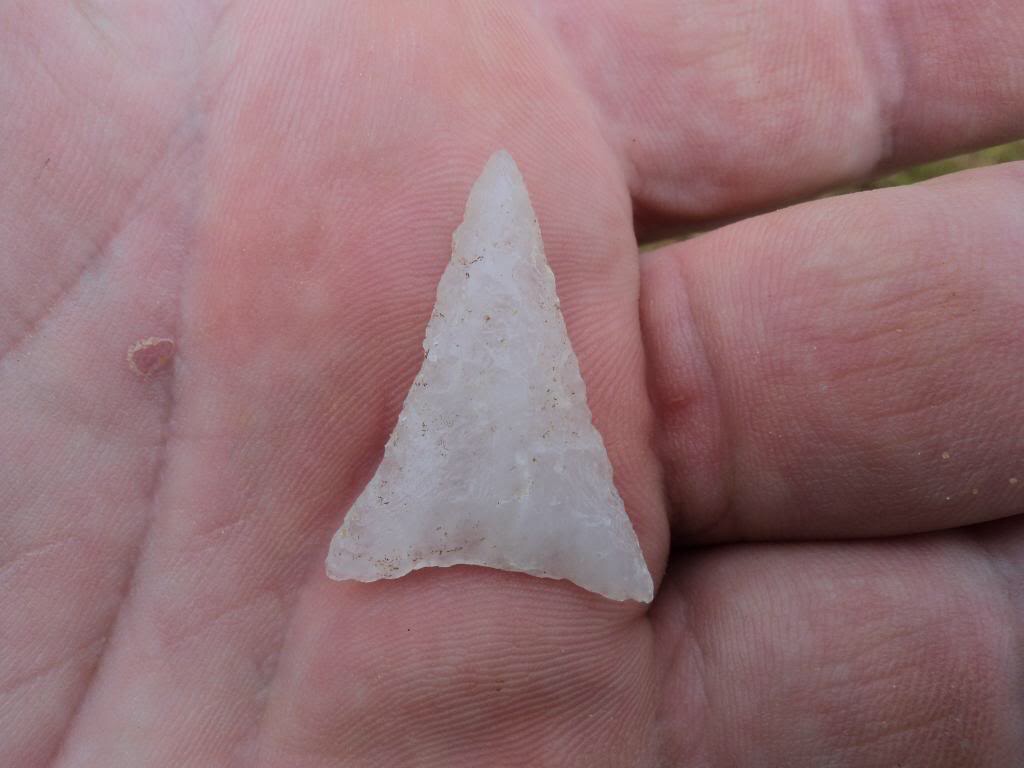Description
Blade: The blade is most commonly an isosceles triangle, although some are equilateral. It is usually thin and fairly flat in cross section. The edges are generally straight, but slightly excurvate or incurvate examples occur.
Haft Element: The base is either straight or slightly concave, or very rarely convex. Basal grinding sometimes is present.
Size: Lengths range from 19 to 60 mm, with an average of around 30 mm. Widths range from 18 to 34 mm, an average of around 22 mm. Studies of Madison points in the Northeast report thicknesses ranging from 2 to 5 mm, with most between 3 and 4 mm, but a sample of 50 points from the middle Potomac Valley had a mean thickness of 5.13 mm (Hranicky 2002).
Technique of manufacture: Finely chipped with pressure flaking.
Material: In a sample of 507 Madison points from the lower Patuxent drainage, Steponaitis (1980) reported that 71% were quartz, followed by quartzite (13%), chert (12%), rhyolite (3%), and jasper (1%). In the area surrounding Zekiah Swamp on the lower Potomac, Wanser (1982) found that 81% of 26 Madison points were quartz, with lesser amounts of quartzite, rhyolite, and chert. In the Monocacy River drainage, 88% of 338 Madison points were quartz, with 9% rhyolite, 2% chert, and less than 1% of quartzite, argillite, and chalcedony (Kavanagh 1982). Rhyolite, chert, quartzite, and quartz are used for Madison points in the middle Potomac River Valley (Hranicky 2002). At the Hughes site in Montgomery County, 94% of 602 triangular points (all types) were quartz, with the rest chert, rhyolite, and chalcedony (Jirikowic 1999). In Delaware, triangular points are most commonly made from quartz, jasper, and chert (Custer 1996a).
Discussion
The Madison is an arrowhead that is found nearly everywhere east of the Mississippi River, and similar points are found in the West (Justice 1987). The Madison point is morphologically similar to other triangular points, like the earlier Hamilton from Tennessee (Kneberg 1956) or the later Caraway from North Carolina (Coe 1964).
(Diagnostic Artifacts from Maryland)


Personal find and photos by David Beckes
Blade: The blade is most commonly an isosceles triangle, although some are equilateral. It is usually thin and fairly flat in cross section. The edges are generally straight, but slightly excurvate or incurvate examples occur.
Haft Element: The base is either straight or slightly concave, or very rarely convex. Basal grinding sometimes is present.
Size: Lengths range from 19 to 60 mm, with an average of around 30 mm. Widths range from 18 to 34 mm, an average of around 22 mm. Studies of Madison points in the Northeast report thicknesses ranging from 2 to 5 mm, with most between 3 and 4 mm, but a sample of 50 points from the middle Potomac Valley had a mean thickness of 5.13 mm (Hranicky 2002).
Technique of manufacture: Finely chipped with pressure flaking.
Material: In a sample of 507 Madison points from the lower Patuxent drainage, Steponaitis (1980) reported that 71% were quartz, followed by quartzite (13%), chert (12%), rhyolite (3%), and jasper (1%). In the area surrounding Zekiah Swamp on the lower Potomac, Wanser (1982) found that 81% of 26 Madison points were quartz, with lesser amounts of quartzite, rhyolite, and chert. In the Monocacy River drainage, 88% of 338 Madison points were quartz, with 9% rhyolite, 2% chert, and less than 1% of quartzite, argillite, and chalcedony (Kavanagh 1982). Rhyolite, chert, quartzite, and quartz are used for Madison points in the middle Potomac River Valley (Hranicky 2002). At the Hughes site in Montgomery County, 94% of 602 triangular points (all types) were quartz, with the rest chert, rhyolite, and chalcedony (Jirikowic 1999). In Delaware, triangular points are most commonly made from quartz, jasper, and chert (Custer 1996a).
Discussion
The Madison is an arrowhead that is found nearly everywhere east of the Mississippi River, and similar points are found in the West (Justice 1987). The Madison point is morphologically similar to other triangular points, like the earlier Hamilton from Tennessee (Kneberg 1956) or the later Caraway from North Carolina (Coe 1964).
(Diagnostic Artifacts from Maryland)


Personal find and photos by David Beckes
